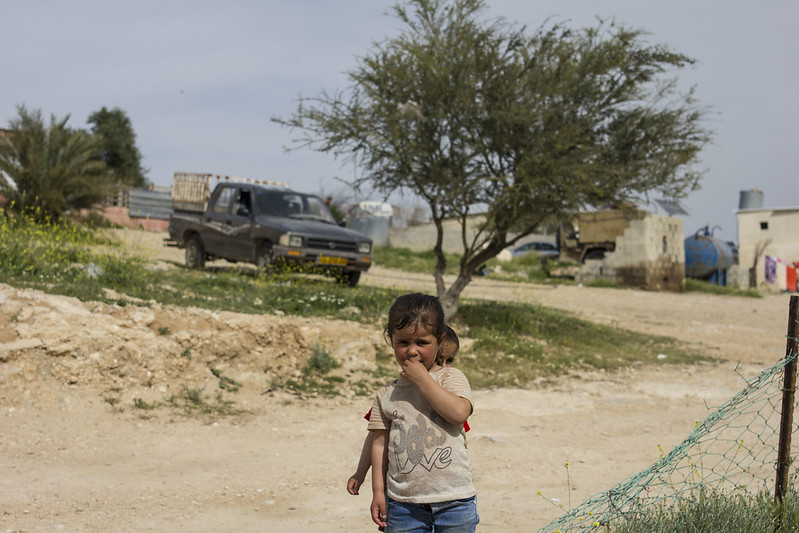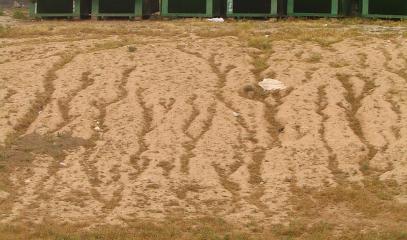Amina and Bedouins, the hidden victims of Iran’s rockets and Hamas’s attack
Currently in intensive care, the seven-year-old is the only person to be seriously wounded by Iran’s attack against Israel because her house and village were not covered by Israel’s Iron Dome defence system. Nothing is known of the fate of Bedouins taken hostage to Gaza. Bedouins in the Negev remain embroiled in disputes and risk seeing their homes demolished and their villages disappear.
Jerusalem (AsiaNews) – Anger is rising in Israel’s Bedouin community. Amid the silence and the indifference of the Israeli government and the international community, they are paying the highest price for the war in Gaza and the tensions between Israel and Iran.
Events in the past few days and months are evidence of that. A little girl, Amina, is in intensive care as the only person seriously wounded in Iran’s rocket and drone attack overnight on 13-14 April, which will be remembered less for its material damages than as a source of tensions that will shape future developments.
While the attack on 7 October has elicited great international media coverage of Israeli and foreign hostages held by Hamas, very little has been said about other hostages, the "forgotten" victims, like Israeli Bedouins, already at loggerhead with the Israeli state over land.
Amina al-Hasoni, 7, is clinging onto life in the intensive care unit at Soroka hospital, Beersheba. She is the only person who was seriously wounded from the hundreds of rockets and drones fired by Iran and intercepted by Israel and its allies.
The little girl is from Israel’s Bedouin community, mostly descendants of Arab Muslim shepherds in the Negev, largely denied the same rights as other Israeli citizens, including the right to protection.
In the event of an attack, “We don't have any shelter,” said 49-year-old Mohamed Hassouna. The father of 14 slams the government for abandoning them to a hail of rockets, Iran’s response to the attack on its embassy in Damascus on 1 April.
Before Israel's creation in 1948, the Negev was home to about 92,000 Bedouins but only 11,000 remained within Israel's borders after the 1948 Arab-Israeli War.
Many today live in unrecognised villages, without planning and basic services such as running water, sewage, and electricity. Very few have access to shelters, even though they have asked for them.
The Hasoni family lives in one of these settlements, sharing a hill with the village of al-Fur'ah, not far from the Nevatim Airbase, the probable target, which suffered only minor damage.
When the sirens went off Saturday evening (13 April), the girl's family felt trapped with nowhere to go for safety, an easy target – as it turned out – for rockets. “The state does nothing for us," said another resident who asked not be named.
When Hamas attacked on 7 October, triggering the war in Gaza, the community was left totally unprotected. Some 21 Israeli Bedouins died that day at the hands of Hamas, seven in a rocket attack, but little of this was reported in the media.
Outside the hospital in Soroka, where Amina is being treated, the president of the Regional Bedouin Council voiced the collective anger.
“We demand all of our rights," said Jabbar Abu Caf. “We must have protection for our villages – we must act together with the government to make sure there are no further victims,” he insisted.
“It's always the Bedouins who suffer, whether the shooting comes from the east or the west,” he lamented. “We are the victims, and nobody takes us into account.”
One example of this occurred a few weeks ago outside United Nations headquarters in New York.
An Israeli Bedouin, Ali Al-Ziadna, clashed with the Palestinian ambassador to the UN Riyad Mansour, over the fate of some family members in the hands of Hamas whose fate remains unknown. One missing relative is a nephew who suffers from diabetes and needs medical attention.
Addressing the Palestinian diplomat, Al-Ziadna told him to speak to him “as a Muslim to a Muslim," asking him, “Why did Hamas abduct my relatives? What crime did they commit that they abducted them? They’re in tunnels for five months for what? On what basis? They’re Muslims just like me and you. They returned the Thais without a deal but our children, no. They left the Muslims starving in the tunnels, wounded and naked.”
Words that highlight the sense of frustration and neglect felt in the Bedouin community, forced to fight to keep their lands, homes and villages, targeted by settlers and government demolition orders whenever the authorities declare some of their constructions illegal.
Since 2003, at least 11 communities have been recognised retroactively, but another 35 remain in limbo in the Negev area, this according to the Association of Civil Rights in Israel (ACRI).
The village of Umm al-Hiran was initially included among the villages slated for recognition, but the decision was reversed in 2004 by the Land Management Authority, which issued demolition orders for local houses.
Starting in 2016, a new Jewish religious community, Dror, was built on the outskirts of the village, threatening to speed up its evacuation and demolition.
In wartime, one of the main problems for unrecognised Bedouin villages is that they are not covered by the Iron Dome system, which only intercepts rockets directed at urban areas recorded on maps. It is not triggered when rockets appear to be directed at “open areas”.
In addition, after the Hamas attack on 7 October, most Bedouins lost their jobs on farms, in small factories in the area or as drivers, since the local economy came to a virtual halt.
Entire families are without a source of income and most schools have been closed, a major issue for some of the poorest families since, before the war, more than 40,000 Bedouin children from a low socioeconomic background ate a hot meal in schools, the only one for many of them.
The number of needy families has increased enormously and the overall situation for the Bedouin community is, as one source put it, “getting worse.”
Stock photo: Flickr/Duoyen (a little girl in the Bedouin village of um al-Hiran)
02/02/2022 15:35
12/10/2023 17:48








.png)










